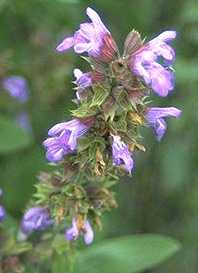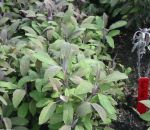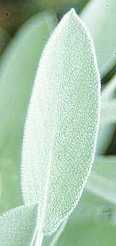Categories
Calendars
Guides
- Help on the Allotment
- Greenhouse World
- The Perfect Lawn
- Water Garden Features
- Beginner's Corner
- Pest and Disease
- Garden Techniques
Reviews
Archive
Gallery
Articles
Ask Our Gardening Expert
How to Grow Sage
Sage is very slow to establish itself, so be prepared for a wait if you grow it from seed. When established however, common sage is reasonably hardy and tolerant of almost all conditions as long as it receives a regular dose of full sun.
QUICK GUIDE TO SAGE
Sage Folklore
Click here
Latin Name Salvia officinalis
Type
Edible flowering herb.
Site and Soil Most soils, partial shade or full sun.
Plant to Harvest Time
Seed sown - 15 months
Rooted cutting - 3 months
It is well suited to growing in containers and will grow indoors if given sufficient light. Add to this the nicely textured velvet grey-green leaves and violet flowers and you have a herb or flowering plant well-suited to all gardeners.
There are several varieties of sage with different coloured flowers and even variegated leaves (some fine for kitchen use), although none are as hardy as the common sage.
Where To Grow Sage
Sage will grow almost anywhere as long as it is in full sun for a good part of the
day. The
best soil is a well-dug medium one, with a handful or two of bonemeal
worked in twice during the summer. What sage does not like is soil that
is moist all the time - it is a native of Mediterranean areas.
The
best soil is a well-dug medium one, with a handful or two of bonemeal
worked in twice during the summer. What sage does not like is soil that
is moist all the time - it is a native of Mediterranean areas.
Propagating
Sage
Sage is sold at most garden centres in small pots - as long as they are
purchased after all danger of frost has passed, they can be planted
straight outside. This is the quickest and most reliable way to start
growing sage. Make sure that a 90cm (3ft) is in place near the main stem
- the plant can be tied to it as it grows. Sage can stand by itself most
of the time, but the odd strong wind may snap the brittle woody stem. You should be able to pick a few leaves in July
time if
planted in Spring.
It is more satisfying to raise sage from seed, but be prepared to wait. Sow indoors in March (potting compost is fine), or in April outside. The plants will grow very slowly and you will only be able to begin harvesting in June the next year.
Sage looses some of its strength after three or four years, so it is necessary to take cuttings in Spring (5cm or 2in long) to replace the plant the next year.

Purple Sage
Work in a couple of handfuls of bonemeal to the surrounding soil at
the beginning and end of each summer. After the flowers die down, prune
the plant to about half it's size. Other than that, leave it to fend for
itself.
One word of warning - in dry spells, resist the temptation to water, sage prefers dry sunny conditions.
Harvesting Sage
Simply cut off the leaves with scissors or pinch off with your
fingers as and when required.
One plant should be sufficient for the kitchen needs of most households.
Sage is best used fresh, although leaves frozen in a plastic bag are an
excellent alternative. Dried sage lasts almost indefinitely if stored in
an airtight bottle in a dry place out out of sunlight.
required.
One plant should be sufficient for the kitchen needs of most households.
Sage is best used fresh, although leaves frozen in a plastic bag are an
excellent alternative. Dried sage lasts almost indefinitely if stored in
an airtight bottle in a dry place out out of sunlight.
Container
Growing Sage
Simplicity itself - use potting compost (remember to put a good
layer of stones at the bottom for drainage) and keep the plant on the
dry side throughout it's life. A feed every month with general purpose
liquid plant food will be enough. Prune as described above.
Sage can be grown indoors as long as it is placed on a sunny windowsill - it will stand direct sunlight with no problems.
Recommended Sage Varieties
Choosing a variety of sage is a matter of personal taste. However, for
starters, shown below are a few tried and trusted varieties, all of
which can be bought online by clicking().
Sage Salvia officinalis Icterina - variegated leaves and lilac blue flowers as well as being ideal as the traditional herb sage.
Purple Sage Salvia officinalis Purpurascens - great for use as the traditional sage herb, but also with purple foliage.
Sage Salvia officinalis - as the Latin name implies, this is the original sage used for centuries to flavour stuffing, meats and even make sage tea.
END OF SAGE ARTICLE

